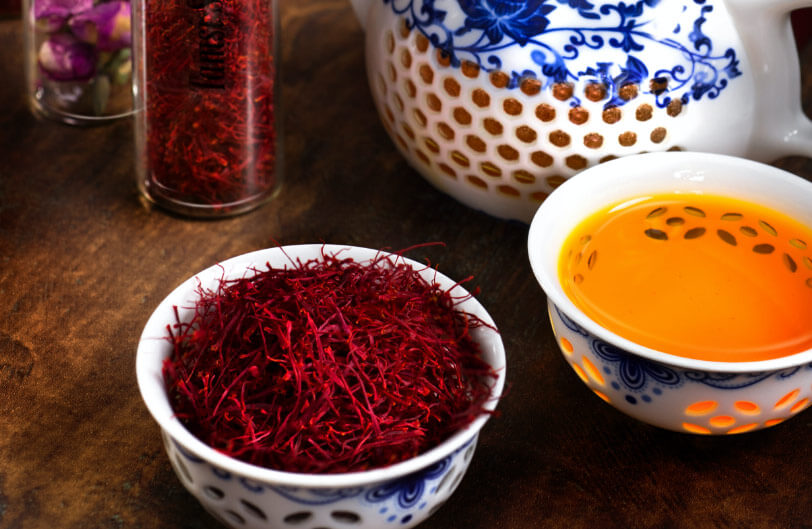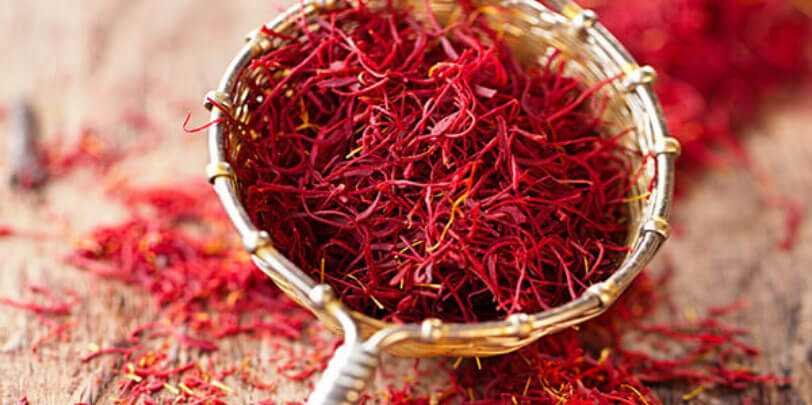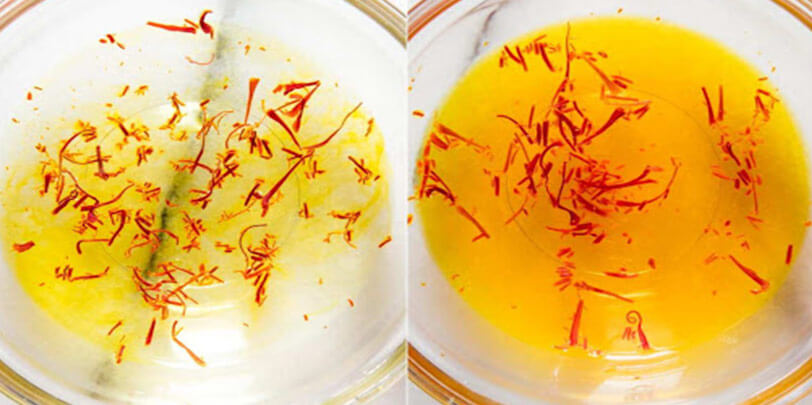How to Identify Pure Saffron
Many people have heard about the benefits of saffron. However, it can be confusing to understand how to identify pure saffron threads and how to identify the different types of saffron. With such a high price by weight, it’s important to know what you’re paying for and to make sure you are receiving a high-quality product with the best smell, taste, and color.

The quality and strength of saffron depend on how it is harvested and sorted as well as the amount of time that has passed since harvest. Each part of the saffron thread is responsible for a specific property. The red stigma of the plant determines the color and flavor and the style, the yellow-while portion that is sometimes included, can also contribute to the weight and value of the saffron for sale.
So, let’s have a look at the different ways to identify pure saffron!
What determines the quality of saffron?
- Grade – The highest quality saffron is typically from Iran, Spain, and Kashmir and they are sold in grades. You can check the saffron grade, often printed on the packaging. All Zarlux Saffron products are the highest quality, Grade A saffron.
- Age – Like other food products, the fresher the saffron, the higher its quality will be. Make sure to check for signs of old age such as broken threads that can indicate old saffron or poor handling. Pure saffron should be dry, so make sure that the saffron is not moist.
- Packaging – To preserve freshness, saffron should always be stored in a cool place, in an air-tight container and away from direct light. High-quality saffron will almost always have air-tight packaging, such as the tin containers used for Zarlux products, that does not allow light to reach to threads.
- Cost – High-quality saffron will be expensive due to the production process. Cheaper saffron brands will be mixed with other ingredients or contain added chemicals.
- Color – The red stigmas of the saffron threads indicate full flavor and taste. While the white and yellow portions of the style also provide many health benefits, they will lower the grade and cost of saffron.
How to test Saffron threads for purity?
There are three main compounds contained in the saffron thread. These compounds are crocin, picrocrocin, and safranal. Crocin is the compound responsible for the color potency of saffron and contains many beneficial antioxidants. To test the color of saffron you can try the cold-water test.
1. Cold Water Test
Fill a glass bowl or cup with cold water and place a couple of saffron threads in the water. Saffron threads in water will begin to release some color. However, pure saffron will release its color slowly over about 10 to 15 minutes while fake saffron with added color will release a lot of color immediately.
Additionally, pure saffron threads should release a bright yellow or orange color that turns slightly deeper as concentration increases. On the other hand, if you see a deep crimson or red color in the water, chances are that the saffron is altered. If this is the case, it would be wise to steer away from the product as it may contain harmful chemicals and coloring agents.
Finally, it’s important to note that the actual saffron thread will not lose its red color as the water changes color. Fake saffron will turn white after a short amount of time.
2. Taste it
Picrocrocin is a natural compound that determines the flavor of saffron. You can check the quality of saffron by tasting a couple of threads. Real saffron will have an earthy flavor. As a rule of thumb, remember, pure saffron will smell sweet but it will never taste sweet.
3. Smell it
Pure saffron should have a sweet aroma, something that resembles that of honey. This smell is due to the concentration of safranal in the threads.
4. Rub the saffron threads between your fingers
After saffron has bloomed in cold water for a few minutes, take a couple of the threads and rub the threads between two fingers back and forth a few times. Pure Saffron threads hold their shape without breaking apart, whereas fake saffron will fall apart or turn to liquid.
Experienced shoppers and chefs can differentiate real saffron from fake saffron by its appearance, aroma, and color. However, there are also ISO standards, such as the ISO 3632 standard for saffron that can help customers identify pure saffron. That is why at Zarlux we are so confident in our promise for quality by ensuring that Zarlux saffron meets strict laboratory requirements for quality and freshness. To learn more about the international standards at Zarlux Saffron head over to our quality control page.
We hope this article has been helpful to you!



